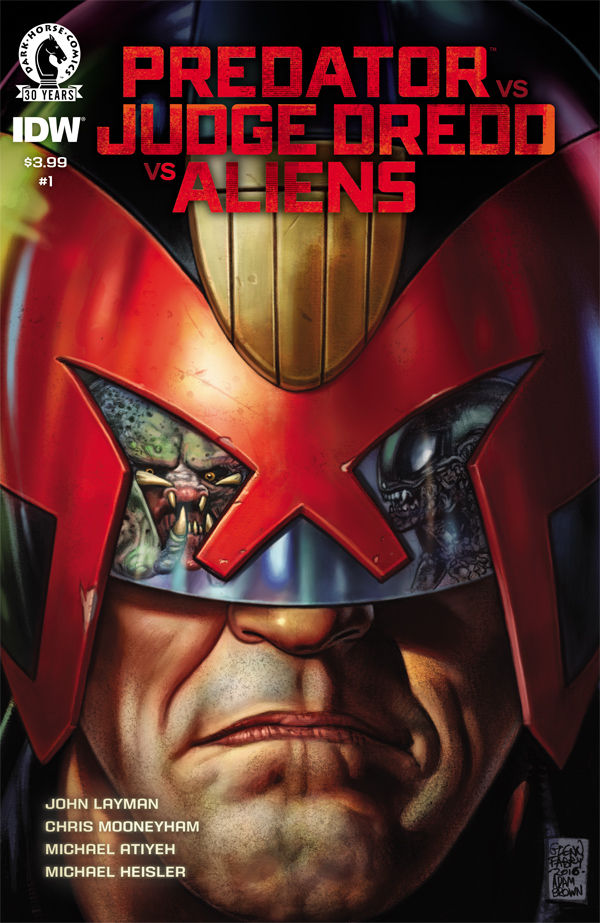Dredd Full Movie Part 1
- The ultimate news source for music, celebrity, entertainment, movies, and current events on the web. It's pop culture on steroids.
- In Demolition Man (1993), Sandra Bullock's character Lenina Huxley is telling Sylvester Stallone's character John Spartan about the Arnold Schwarzenegger Presidential.
Judge Dredd - Wikipedia. Judge Joseph Dredd is a fictional character who appears in British comic books published by Rebellion Developments, as well as in a number of movie and video game adaptations. He was created by writer John Wagner and artist Carlos Ezquerra, and first appeared in the second issue of 2. AD (1. 97. 7), a weekly science- fiction anthology comic.
Read all the hottest movie news. Get all the latest updates on your favorite movies - from new releases to timeless classics, get the scoop on Moviefone.
He is the magazine's longest- running character. Joseph Dredd is a law enforcement and judicial officer in the dystopian future city of Mega- City One, which covers most of the east coast of in North America. He is a "street judge", empowered to summarily arrest, convict, sentence, and execute criminals. In Great Britain, the character of Dredd and his name are sometimes invoked in discussions of police states, authoritarianism, and the rule of law.[2]Judge Dredd made his live action debut in 1. Judge Dredd, portrayed by Sylvester Stallone. Later he was portrayed by Karl Urban in 2. Dredd. Publication history[edit]When comics editor Pat Mills was developing 2.


A Judge Dredd Fan Film Judge William Minty has spent his entire adult life policing the violent streets of Mega-City One - and. Watch ARQ Full Movie. Includes downloads, cheats, reviews, and articles.

AD in 1. 97. 6, he brought in his former writing partner, John Wagner, to develop characters. Wagner had written a Dirty Harry- style "tough cop" story, "One- Eyed Jack," for Valiant, and suggested a character who took that concept to its logical extreme. Mills had developed a horror strip called Judge Dread (after the British ska and reggae artist Alexander Minto Hughes )[3] but abandoned the idea as unsuitable for the new comic; but the name, with the spelling modified to "Dredd" at the suggestion of sub- editor Kelvin Gosnell, was adopted by Wagner.[4][5]The task of visualising the character was given to Carlos Ezquerra, a Spanish artist who had worked for Mills before on Battle Picture Weekly. Wagner gave Ezquerra an advertisement for the film Death Race 2. Frankenstein (played by David Carradine) clad in black leather on a motorbike, as a suggestion of Dredd's appearance.

Ezquerra added body- armour, zips, and chains, which Wagner initially objected to.[6] Wagner's initial script was rewritten by Mills and drawn up by Ezquerra. The hardware and cityscapes Ezquerra had drawn were far more futuristic than the near- future setting originally intended; in response, Mills set the story further into the future[7] (on the advice of his art assistant Doug Church[8]). The original launch story written by Wagner and drawn by Ezquerra was vetoed by the board of directors for being too violent.[9][note 1] A new script was needed for the first episode. Mills initially based the characterisation of Judge Dredd on Brother James, one of his teachers at St Joseph's College, Ipswich. Brother James was considered to be an excellent teacher but also an excessively strict disciplinarian to the extent he was considered abusive. In his blog Mills detailed the moments of rage for which Brother James had a reputation and his own experience witnessing them.[1. The De La Salle monks at the school were a major influence in the 2.
AD design of the 'judge, jury and executioner' attitude of the judges. The name Joseph refers to the school.[1. By this stage, Wagner had quit, disillusioned that a proposed buy- out of the new comic by another company (which would have given him and Mills a greater financial stake in the comic) had fallen through.[1. Mills was reluctant to lose Judge Dredd and farmed the strip out to a variety of freelance writers, hoping to develop it further. Their scripts were given to a variety of artists as Mills tried to find a strip which would provide a good introduction to the character. This Judge Dredd would not be ready for the first issue of 2. AD, launched in February 1.
The story chosen to introduce the character was submitted by freelance writer Peter Harris, and was then extensively re- written by Mills, who added a new ending suggested by Kelvin Gosnell.[1. It was drawn by newcomer Mike Mc. Mahon. The strip debuted in "prog" (issue) no.
Around this time Ezquerra quit and returned to work for Battle. There are conflicting sources about why.
Ezquerra says it was because he was angry that another artist had drawn the first published Judge Dredd strip.[1. Watch Prey Online there. Mills says he chose Mc. Mahon because Ezquerra had already left, having been offered a better deal by the editor of Battle.[1. Wagner soon returned to the character, starting in prog 9. His "Robot Wars" storyline was drawn by a rotating team of artists (including Ezquerra), and marked the point where Dredd became the most popular character in the comic, a position he has rarely relinquished.[1. Judge Dredd has appeared in almost every issue since, most of the stories written by Wagner (in collaboration with Alan Grant between 1.
In 1. 98. 3 Judge Dredd made his American debut with his own series from publisher Eagle Comics, titled simply Judge Dredd.[1. It consisted of stories reprinted from the British comic. Since 1. 99. 0 Dredd has also had his own title in Britain, the Judge Dredd Megazine. With Wagner concentrating his energies on that, the Dredd strip in 2. AD was left to younger writers, including Garth Ennis, Mark Millar, Grant Morrison and John Smith. Their stories were less popular with fans, and sales fell.[2. Wagner returned to writing the character full- time in 1.
Judge Dredd has also been published in a long- running comic strip (1. Daily Star,[2. 1] and briefly in Metro from January to April 2. These were usually created by the same teams writing and drawing the main strip, and the Daily Star strips have been collected into a number of volumes. In 2. 01. 2 Dredd was one of ten British comic characters commemorated in a series of stamps issued by the Royal Mail.[2. Character and appearance[edit]Judge Dredd from his first published story, as drawn by Mike Mc. Mahon in 1. 97. 7. The character's appearance has remained essentially unchanged ever since, except for a more prominent jawline.
Joseph Dredd is the most famous of the Street Judges that patrol Mega- City One, charged to instantly convict, sentence, and execute offenders. Dredd is armed with a "Lawgiver" pistol (programmed to recognise only his palm- print, and capable of six types of ammunition), a daystick, a boot knife and stun or gas grenades. His helmet obscures his face, except for his mouth and jaw. He rides a large "Lawmaster" motorcycle equipped with machine- guns, a powerful laser cannon, and full artificial intelligence capable of responding to orders from the Judge and operating itself. Dredd's entire face is never shown in the strip. This began as an unofficial guideline, but soon became a rule.[2.
As John Wagner explained: "It sums up the facelessness of justice − justice has no soul. So it isn't necessary for readers to see Dredd's face, and I don't want you to".[2. On rare occasions, Dredd's face has been seen in flashbacks to his childhood; but these pictures lack detail.[2. In an early story, Dredd is forced to remove his helmet and the other characters react as if he is disfigured; but his face was covered by a faux censorship sticker.[2. In prog 5. 2, during Dredd's tenure on the Lunar Colonies, he uses a 'face- change' machine to impersonate the crooked lawyer of a gang of bank robbers.[2. In Carlos Ezquerra's original design, Dredd had large lips, "to put a mystery as to his racial background".[3.
Not all of the artists who worked on the strip were told of this. Mike Mc. Mahon drew Dredd as a black man, while Brian Bolland and Ron Smith drew him as white. Watch Young Ones Hindi Full Movie. The strip was not yet printed in colour, and this went unnoticed. The idea was finally dropped.[3.